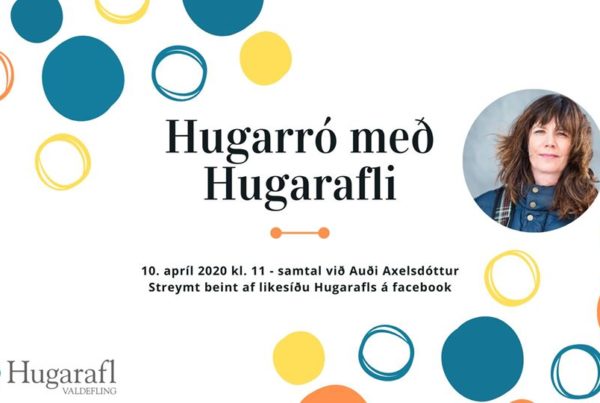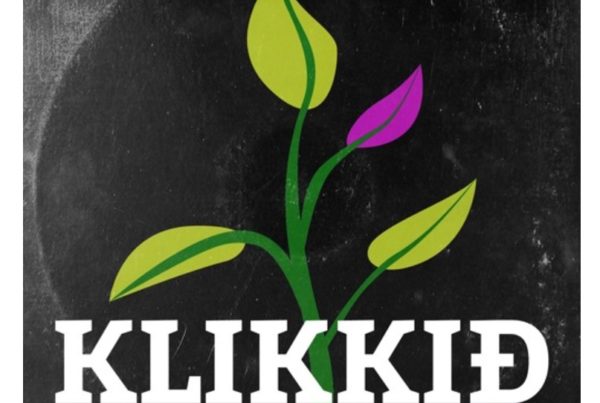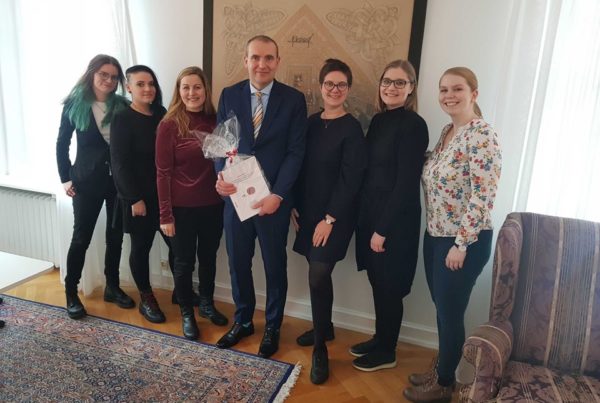Eftirfarandi grein sem er á ensku birtist á vef ABC í Ástralíu. Greinin fjallar um Open Dialogue, finnsku leiðina sem farin hefur verið til þess að taka á hlutum þegar einstaklingur fer í geðrof. Nálgunin byggist á að ná til sem flestra sem eru í kringum viðkomandi og fundinn leið í fullu samráði sem hentar í tilteknum kringumstæðum til að ná bata. Hugarafl hefur barist fyrir svipaðri nálgun hér á Íslandi enda hefur Open Dialogue virkað mjög vel við svipaðar aðstæður og er að finna hér.
Open Dialogue: Finland’s alternative approach to mental illness
Almost 30 years ago a group of clinicians in Finland decided to treat psychosis differently. Their approach, known as Open Dialogue, has impressive recovery rates—and now Australians are taking an interest, writes Lynne Malcolm and Olivia Willis.
Anna Arabskyj’s story began in October 2012, when her son became unexpectedly ill.
‘[He] was thrust into this world of responding to things that I couldn’t see or hear,’ she says. ‘He did seem, a lot of the time, in quite a bit of distress.’
People who are experiencing a mental health crisis are treated as if they are isolated individuals, as if what’s going on is just happening inside the chemicals in their head.
FLICK GREY, MENTAL HEALTH RESEARCHER
Her son was experiencing psychosis. He was hospitalised for some time before being put on anti-psychotic medication. After a while, however, the medication stopped working.
Later, a family therapist named Val Jackson introduced Arabskyj to Open Dialogue, a model of crisis care conceived almost 30 years ago in Finland. Jackson inspired Arabskyj to think differently about her son’s experience.
‘She kind of put to me that what was happening to my son was an answer to a very difficult life situation, and when you are faced with that situation it could be possible to begin to hear voices or have unusual beliefs. It can happen to anyone if you are put in that stressful-enough situation.’
Jackson explained to Arabskyj that what her son was experiencing in ‘this other world’ was a metaphor for traumatic life events. Events that her son had not yet found a language to talk about.
Arabskyj and her son began to have sessions to treat his psychosis using the Open Dialogue approach.
‘We loved the meetings. Immediately, my son said it was just so great.’
Open Dialogue, which clinical psychologists have been developing since the 1980s, brings the patient together with their family, friends and health professionals. It’s a meeting of minds, to explore perspectives on the crisis at hand.
The program’s founder, Jaakko Seikkula, says the aim of meetings is not to reach a rapid solution or to immediately change the direction or dynamic of the family.
‘It’s a dialogue to understand what this problem is all about, and what has happened in the life of the client.’
Seikkula says the key to crisis intervention is starting treatment early, and ensuring all voices are listened to—especially the patient’s.
‘This is not simple because in a family, it really can be very contradictory experiences of the situation within a crisis, and this is the primary challenge for the therapist.’
Mental health researcher Flick Grey has taken a keen interest in the Open Dialogue model, and was awarded SANE Australia’s Hocking Fellowship to investigate the psychiatric service.
‘People who are experiencing a mental health crisis are treated as if they are isolated individuals, as if what’s going on is just happening inside the chemicals in their head.’
According to Grey, this means treatment predominantly tends to involve hospitalisation and medication.
‘What Open Dialogue does instead is it sees that a lot of these challenges are between people … so it actually invites the person and their network to all come together and talk, and that actually in that talking things resolve.
‘It’s not that it’s anti-medication or hospitalisation or diagnosis necessarily, but they are not seen as the main way you treat someone who is in a crisis.’
Seikkula says that once a patient begins to feel that they have ‘been taken seriously’ during the Open Dialogue meetings, their level of anxiety and tension starts to decline ‘quite dramatically’.
‘You can realise that already in the very first session and by so doing, the need for longer-term medication declines.’
Anna Arabskyj remembers how engaged and receptive her son was during their first Open Dialogue session with Seikkula and another therapist, Mary. Arabskyj noted how neither therapist had a file about him in front of them, which immediately set her son at ease.
‘His point was how can you care about someone that you don’t even want to get to know personally? He commented that Jaakko and Mary just weren’t like that.’
Arabskyj says throughout the Open Dialogue process, she realised that she had been ‘blinkered’ when it came to her son’s psychosis.
‘I got stuck with the idea that the only way for him to move forward was for him to speak of his experiences … But for my son, me bringing this up all the time, to him it just felt like pressure.
‘I saw how Jaakko totally accepted what my son was saying, and accepting it immediately took the pressure off him, and that showed me that in order to support my son I have to accept this too, and this time I got it.’
Arabskyj says each meeting gave her a new understanding of her son’s experience, and by simply listening to each other they were able to strengthen their relationship and improve his mental health.
‘Open Dialogue doesn’t seek solutions, the solutions just happen,’ she says. ‘My son decided that the way forward for us was that he just gets on with living his life, and he needs to know that I’m getting on living my life as well.’
Flick Grey believes what makes Open Dialogue unique is that all conversations— personal and professional—happen in front of the patient and their network.
‘There are moments during an Open Dialogue meeting where clinicians might turn to each other and do what is called a reflection, and actually talk about what’s going on in their head.
‘Everyone’s voice, the multiple perspectives people bring, are deeply listened to. People can feel ambivalent in that space and they can express their vulnerability, their frustrations, all sorts of things, and there’s no sense of trying to change people, although change does happen through that deep listening.’
Grey says the success of the program is due to its core philosophy: ‘A sense of engaging without strategically trying to change people.’
‘I think it actually changes the working conditions for clinicians as well, such that they are much more able to be human and vulnerable and people. In a way I think the current system doesn’t quite allow that spontaneity and real depth of humanity.’











